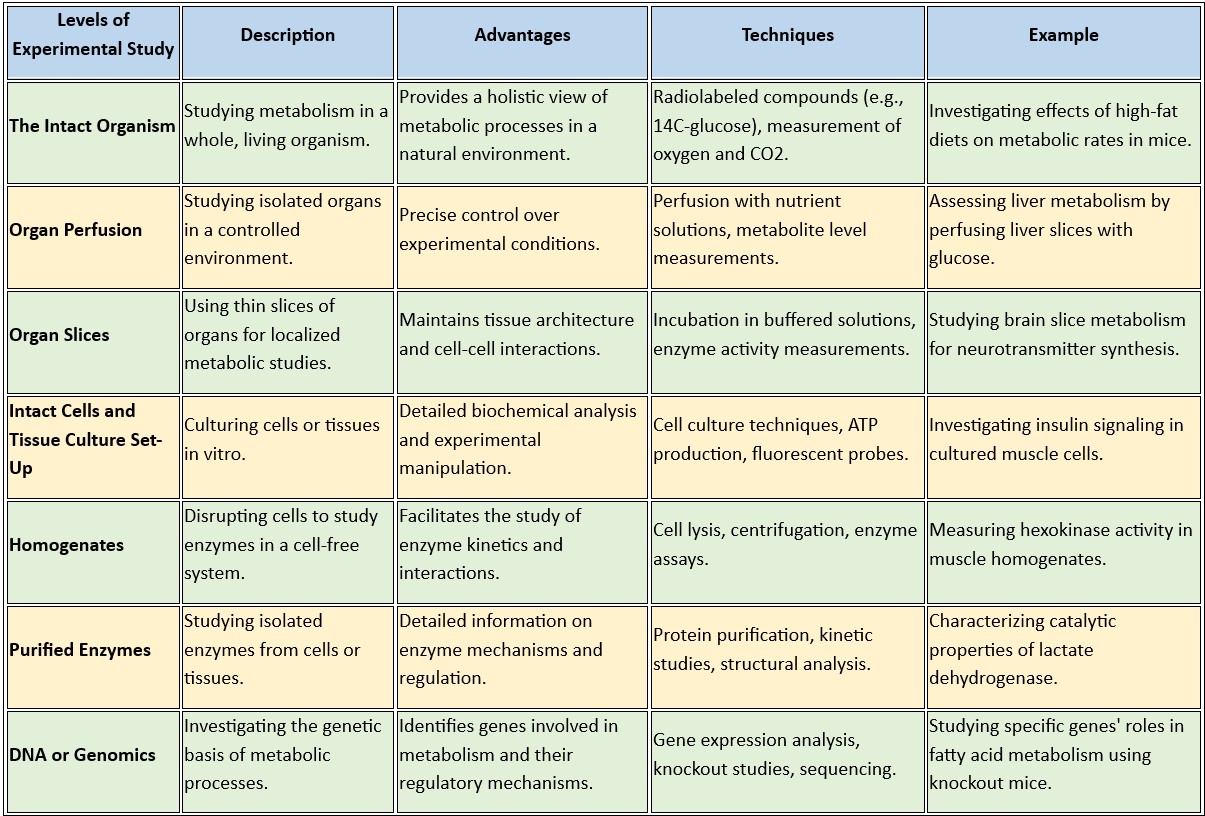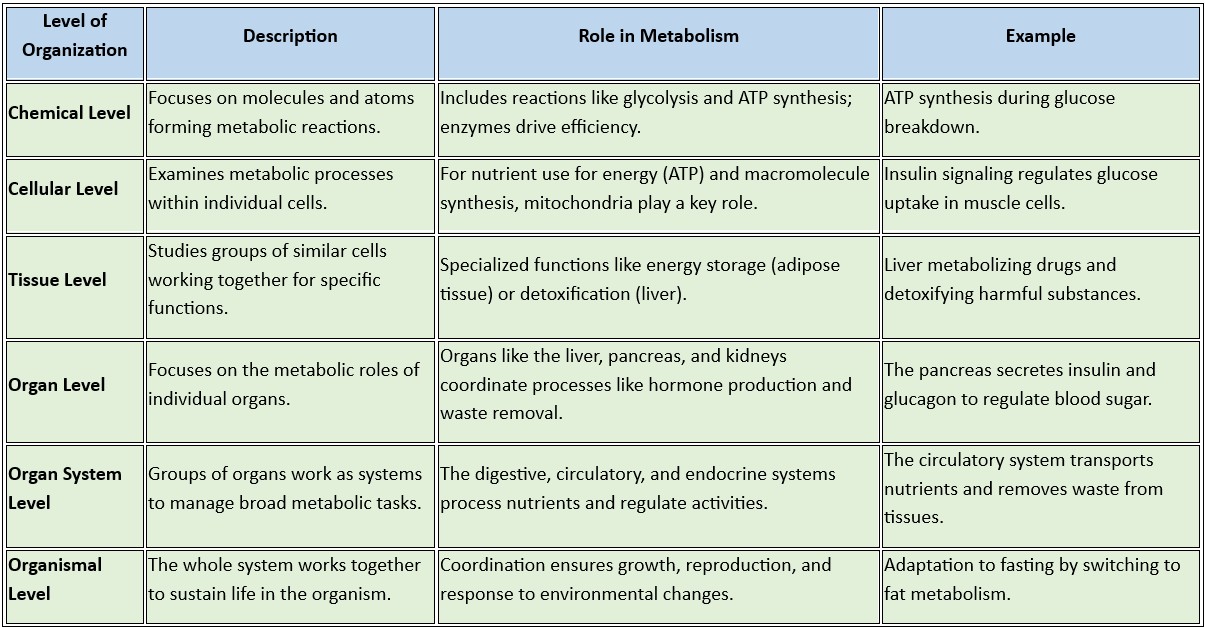EXPERIMENTAL STUDY OF METABOLISM
Six levels of organizations
2. The Metabolic Sequences: A Systematic Framework for Understanding Metabolic Sequences
Metabolism encompasses the chemical reactions that sustain life within living organisms, allowing for growth, reproduction, maintenance, and response to environmental changes. Understanding these metabolic sequences is crucial, and the six levels of organization provide a structured framework to grasp these complex processes.
The Six Levels of Organization
1. Chemical Level 2. Cellular 3. Tissue Level 4. Organ Level 5. Organ System Level 6. Organismal Level
Perspectives on Metabolism
Catabolic Pathways: These pathways break down complex molecules into simpler ones, releasing energy in the process. Examples include glycolysis and the citric acid cycle.
Anabolic Pathways: These pathways synthesize complex molecules from simpler ones, requiring energy input. Examples include gluconeogenesis and fatty acid synthesis.
Amphibolic Pathways: These pathways can function both catabolically and anabolically, depending on the cellular conditions. An example is the citric acid cycle, which can produce energy or serve as a precursor for biosynthesis.
Perspectives on Metabolic Organization
Holistic View: Examining metabolism from the organismal level down to the chemical level provides a comprehensive understanding of how metabolic processes are interconnected.
System Integration: Understanding the interplay between different organ systems helps in identifying how disruptions in one system can affect overall metabolism.
Clinical Relevance: For medical students, knowledge of these levels aids in diagnosing and treating metabolic disorders, understanding pharmacokinetics, and developing targeted therapies.
Conclusion
The six levels of organization offer a systematic framework for understanding metabolic sequences, from the molecular interactions at the chemical level to the integrated functions at the organismal level. By studying metabolism at each level, medical students gain a thorough understanding of how the body maintains life, supports health, and responds to various challenges.
Introduction: This article covers two main points in the study of metabolism
Understanding the techniques is crucial for medical students as it forms the basis for comprehending how the body generates energy, synthesizes essential molecules, and maintains homeostasis. This article explores the experimental study of metabolism at various levels, providing insights into the techniques.
Metabolism encompasses the chemical reactions that sustain life within living organisms, allowing for growth, reproduction, maintenance, and response to environmental changes. Understanding these metabolic sequences is crucial, and the six levels of organization provide a structured framework to grasp these complex processes.
This article delves into each level, highlighting its significance and role in metabolism.




Significance of Understanding Metabolic Sequences
Studying metabolism at these levels provides:
Insight into Health: It helps in identifying metabolic disorders like diabetes or hypothyroidism.
Drug Development: Understanding metabolic sequences aids in designing targeted therapies.
Personalized Nutrition: Supports tailored diets for optimal health based on an individual's metabolic profile.
Hormonal Regulation: The endocrine system controls metabolic pathways through hormones like insulin, glucagon, and thyroid hormones.
Biotechnology Advancements: Enable engineering of microbes for applications like biofuel production and environmental cleanup.
By systematically analyzing metabolism, we can not only understand life processes but also apply this knowledge to real-world challenges in medicine, agriculture, and industry.
BLOG
Join us to explore medical biochemistry intricacies.
WRITE TO US
© 2024. All rights reserved.
